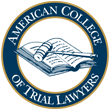Posted by Joshua R. Goodbaum in Sexual Harassment
Feb 11 2019
At Garrison, Levin-Epstein, Fitzgerald & Pirrotti, P.C., we have been advocating for workers for more than 40 years. We are proud to have represented countless employees who have experienced workplace sexual harassment and to have obtained millions of dollars for them. Unfortunately, though, no number of lawsuits and no amount of money can change the experience of being harassed. The best way to help victims of sexual harassment is not to find them the best sexual harassment lawyers after the fact, but to keep them from being harassed in the first place.
I have previously written about what you can do if you believe you are being sexually harassed and about what you can do to prevent sexual harassment in your workplace. In this installment of the Employee Rights Blog, I want to talk about a broader solution — namely, what state and local governments can to do prevent sexual harassment. And, in particular, what the Connecticut Legislature can do to keep Connecticut’s workers from joining the staggering number of Americans who report being subjected to sexual harassment.
Here are some modest suggestions:
1. Require interactive sexual harassment training and effective complaint procedures.
Research suggests that sexual harassment prevention training is important but that not all training is created equal. Reading a policy or filling out a form is not as effective as in-person training by an expert in sexual harassment prevention. In-person training, after all, can be customized to the specific needs, practices, and culture of a particular business.
That may be why, since 2005, California businesses with 50 or more workers have been required to provide at least two hours of classroom or other interactive training. This training must be given to all supervisory staff every two years and to all new supervisors within six months of when they become supervisors.
All mandated training should include information not just for people who might be subjected to sexual harassment or those who are at risk of acting inappropriately or even illegally; it should also be targeted to people who might observe sexual harassment. These so-called “bystanders” play a pivotal role in limiting the extent of workplace sexual harassment by interfering with potential harassment and practicing and encouraging workplace civility. The key is to train people what to do, not what not to do: positive affirmation and validation, not prohibition.
Likewise, businesses should be incentivized to encourage reporting of improper workplace behavior. An increase in the number of complaints demonstrates faith in the system, not dysfunction, and managers should be rewarded — at least initially — for an increase in reports in their departments.
Too often employees are told that nothing can be done unless they want to file a “formal report,” which many (rightly) fear will result in retaliation. One solution is to create so-called information escrows, where victims submit a time-stamped complaint that is only reported formally if another employee complains about the same alleged abuser.
2. Clarify corporate liability.
Too often, employees subjected to sexual harassment find themselves unable to sue the companies that have acquiesced to — if not actively promoted — the workplace cultures that enabled the harassment. That is because of a couple of legal doctrines created by the U.S. Supreme Court that limit the ability of sexually harassed employees to hold their employers accountable. Since federal law generally provides a floor, not a ceiling, for worker protections, Connecticut’s Legislature and State courts are free to make and interpret Connecticut law in a way that provides more protections to Connecticut’s workers.
Usually, employers are liable when their “supervisors” harass the employees who work for them. But the U.S. Supreme Court, by a 5-4 vote, has defined the term “supervisor” narrowly to include only those members of management who are empowered to terminate the subordinate or other take another “tangible employment action.” See Vance v. Ball State Univ., 570 U.S. 421 (2013). The Court excluded from the definition of “supervisor” anyone who directs an employee’s work on a day-to-day basis. Connecticut need not follow this approach. With any luck, the Connecticut Supreme Court will be more protective of employees, as it has done by rejecting other anti-employee doctrines established by the U.S. Supreme Court. See Trusz v. UBS Realty Investors, 319 Conn. 175 (2015) (rejecting limited protections for free speech by employees). Better yet, the Connecticut Legislature could preempt the courts by affirmatively declaring Connecticut employers are responsible for harassment by people who function as supervisors, regardless of whether those “supervisors” can make unilateral termination decisions.
Likewise, the Connecticut courts and/or the Legislature could cut back on another federal law doctrine that provides a so-called “affirmative defense” for companies where harassment occurs. Under the rule created in the cases of Faragher v. City of Boca Raton, 118 S. Ct. 2275 (1998) and Burlington Industries v. Ellerth, 118 S. Ct. 2257 (1998), employers are not liable for hostile work environments — including sexual harassment — when they demonstrate that they exercised reasonable care to prevent and/or correct discriminatory behavior and the employee unreasonably failed to take advantage of opportunities to complain. Although this doctrine properly holds employees responsible for mitigating the damage caused by individual instances of harassment, it too often fails to acknowledge that cursory, check-the-box training is insufficient to provide employees with a meaningful understanding of their rights, nor does it always allow employee-plaintiffs the opportunity to prove that theoretical avenues of complaint were practically unavailable. After all, when it is the owner or powerful executive of a business who is doing the harassment, reasonable employees will necessarily be afraid to file complaints.
For a model for how to handle this complex issue of vicarious liability for sexual harassment, the Connecticut Legislature could look to New York City, which has City Human Rights Law that strongly prohibits acts of workplace harassment.
3. Promote corporate diversity.
One of the surest ways to stem the tide of workplace sexual harassment is to make workplaces more diverse. As an article in the Harvard Business Review acknowledged, “harassment flourishes in workplaces where men dominate in management and women have little power.” One solution, then, is to distribute workplace power more evenly. Ideally, this redistribution would be a natural product of female empowerment and corporate advancement over the past few decades. But formal equality of opportunity sadly has not produced substantive equality on virtually any metric. A leader in the movement to advance workplace diversity and equity, California recently enacted a law requiring publicly traded companies based in the state to have at least one woman on their board of directors. Although these sorts of laws might be subject to constitutional scrutiny, they nonetheless serve as meaningful symbols of the commitment of progressive states to promoting equality not just on paper but in practice.
4. Give employees their day in court.
A statute of limitations establishes a period of time in which an aggrieved person must file a legal complaint to vindicate his or her rights, with the clock generally ticking from the time the wrong occurs or (sometimes) when the aggrieved person learns of the wrong. The limitations period for breach of a written contract in Connecticut is six years. For intentional torts (such as assault), the limitations period is three years. For negligence claims (including most personal injury claims), the limitations period is two years.
In contrast, for claims of employment discrimination, including sexual harassment, the limitations period is 300 days. That means an employee who has been sexually harassed has just 300 days from the date of the harassment to file a formal complaint with an agency of the government. 300 days is too short, especially when you consider that many victims of grievous workplace harassment are terrified to come forward. Since harassment is necessarily an intentional act, the Legislature should extend the limitations to three years.
Relatedly, a victim of workplace discrimination in Connecticut currently must file a complaint with the Connecticut Commission on Human Rights and Opportunities (or CHRO) before filing a lawsuit in open court, and then must wait a minimum of 300 days before initiating a lawsuit. The CHRO provides a valuable service to complainants who do not have the benefit of lawyers. But for employees who are represented by competent counsel, the CHRO may represent nothing but an obstacle to the meaningful and public airing of grievances that is contemplated by our civil justice system. Employees who want and deserve their day in court should not have to jump through unnecessary and time-consuming administrative procedures in the CHRO.
5. Make sexual harassment more expensive.
Finally, perhaps the best way to prevent sexual harassment is to make it more costly for companies to ignore it. Right now, damages in harassment cases are measured by the loss of wages and by the emotional harm to the victim. But for workers with modest incomes, and for struggling workers whose lives already present a host of challenges, economic and non-economic damages can be meager. This is especially true for claimants who pursue their rights through the CHRO, which sometimes has taken the position that it is not authorized to award damages for emotional distress.
As we have seen in the cases of Matt Lauer and Bill O’Reilly and Charlie Rose (to name just a few), employers too often tolerate serial harassers because those in power may otherwise be very valuable to their companies. The only way to change that perception is to make sexual harassment not just socially and culturally taboo, but also economically unfeasible.
One solution is to empower juries to award punitive damages for willful violations of Connecticut’s anti-discrimination laws. The Connecticut Supreme Court ruled in 2016 that the Connecticut Fair Employment Practices Act did not authorize courts to award punitive damages, even though the relevant statute permitted the court to award all “legal and equitable relief which it deems appropriate.” See Tomick v. United Parcel Service, Inc., 324 Conn. 470 (2016). The Legislature should clarify its intent that punitive damages are an important tool to dissuade the most heinous of workplace misconduct. They will not be appropriate in every case of discrimination. But they should be available when the evidence supports it.
* * *
This blogpost offers some ways that the Connecticut Legislature could advance its commitment to preventing sexual harassment in our State. Fortunately, a bill with many of these features was considered by the Legislature in its 2018 session. With proper consideration this year, come 2020, a version of that bill will be law, and the Legislature will have taken a bold step to combat workplace sexual harassment in Connecticut.
Posted by Joshua R. Goodbaum in Sexual Harassment
Tagged Joshua Goodbaum









